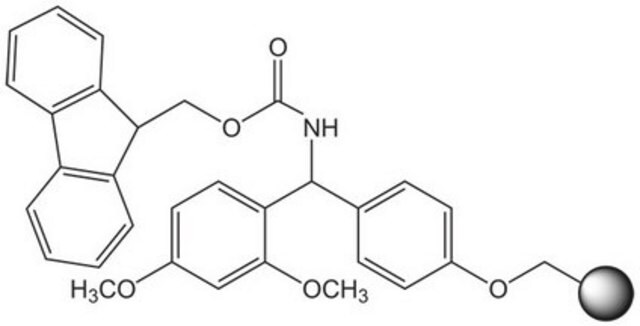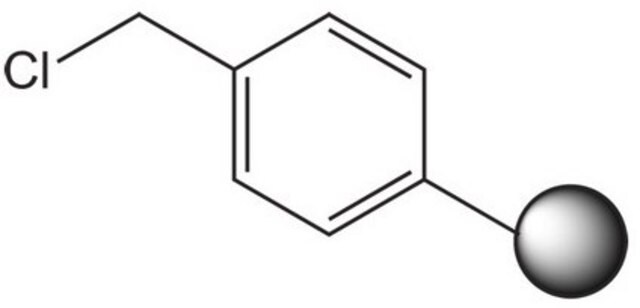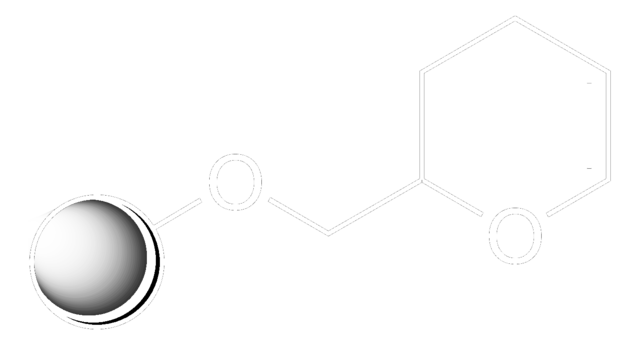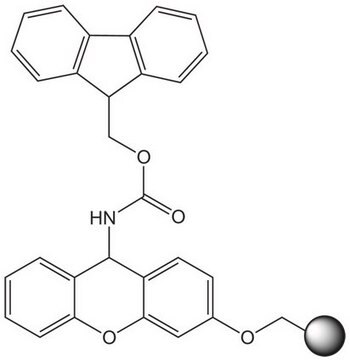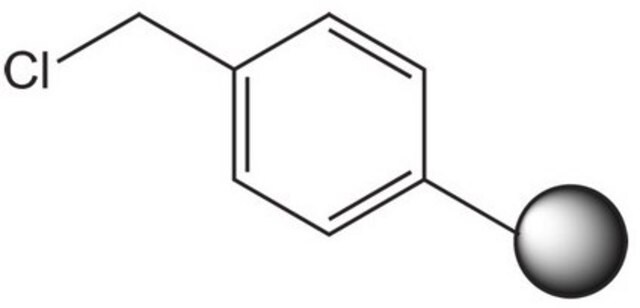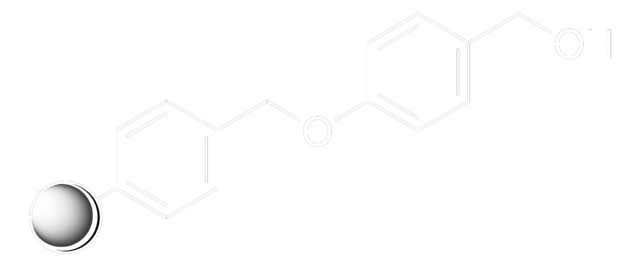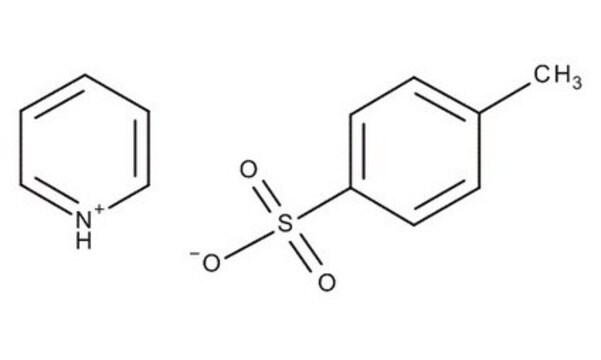8.55079
DHP HM resin (100-200 mesh)
Novabiochem®
Synonym(e):
3,4-Dihydro-2H-pyran-2-yl-methoxymethyl polystyrene (100-200 mesh), Ellman′s dihydropyran resin
About This Item
Empfohlene Produkte
Qualitätsniveau
Produktlinie
Novabiochem®
Form
beads
Eignung der Reaktion
reaction type: Fmoc solid-phase peptide synthesis
reactivity: alcohol reactive
Hersteller/Markenname
Novabiochem®
Anwendung(en)
peptide synthesis
Lagertemp.
2-8°C
Allgemeine Beschreibung
Associated Protocols and Technical Articles
Protocols for Loading of Peptide Synthesis Resins
Literature references
[1] L. A. Thompson & J. A. Ellman (1994) Tetrahedron Lett., 35, 9333.
[2] O. B. Wallace (1997) Tetrahedron Lett., 38, 4939.
[3] G. Liu & J. A. Ellman (1995) J. Org. Chem., 60, 7712.
[4] E. K. Kick & J. A. Ellman (1995) J. Med. Chem., 38, 1427.
[5] J. S. Koh & J. A. Ellman (1996) J. Org. Chem., 61, 4494.
[6] J. Cossy, et al. (2000) Synlett, 3, 409.
[7] M. Ramaseshan, et al. (2000) J. Comb. Chem., 2, 615.
[8] M. Ramaseshan, et al. (2000) Tetrahedron Lett., 41, 4743.
[9] A. Bianco, et al. (2000) J. Org. Chem., 65, 2179.
[10] M. Steger, et al. (2001) Bioorg. Med. Chem. Lett., 11, 2537.
[11] A. Dahlgren, et al. (2003) Bioorg. Med.Chem. Lett., 11, 827.
[12] W. H. Pearson & R. B. Clark (1997) Tetrahedron Lett., 38, 7669.
[13] D. A. Nugiel, et al. (1997) J. Org. Chem., 62, 201.
[14] A. L. Smith, et al. (1998) Tetrahedron Lett., 39, 8317.
[15] S.-E. Yoo, et al. (1997) Tetrahedron Lett., 38, 1203.
[16] J. Beythien (Merck Biociences AG), personal communication.
[17] M. R. Tremblay, et al. (1999) Bioorg. Med . Chem. Lett., 9, 2827.
Verlinkung
Hinweis zur Analyse
Aussehen der Substanz (visuell): Kügelchen
Beladung (Photometrische Bestimmung des Fmoc-Chromophores nach Abspaltung vom Fmoc-Gly-ol beladenen Harz): 0.70 - 1.20 mmol/g
Aufquellvolumen (in CH₂Cl₂): chargenspezifischer Wert
Die Polymermatrix ist Copoly (Styrol-1% DVB), 100 - 200 mesh
Rechtliche Hinweise
Lagerklassenschlüssel
11 - Combustible Solids
WGK
WGK 1
Flammpunkt (°F)
Not applicable
Flammpunkt (°C)
Not applicable
Analysenzertifikate (COA)
Suchen Sie nach Analysenzertifikate (COA), indem Sie die Lot-/Chargennummer des Produkts eingeben. Lot- und Chargennummern sind auf dem Produktetikett hinter den Wörtern ‘Lot’ oder ‘Batch’ (Lot oder Charge) zu finden.
Besitzen Sie dieses Produkt bereits?
In der Dokumentenbibliothek finden Sie die Dokumentation zu den Produkten, die Sie kürzlich erworben haben.
Unser Team von Wissenschaftlern verfügt über Erfahrung in allen Forschungsbereichen einschließlich Life Science, Materialwissenschaften, chemischer Synthese, Chromatographie, Analytik und vielen mehr..
Setzen Sie sich mit dem technischen Dienst in Verbindung.
